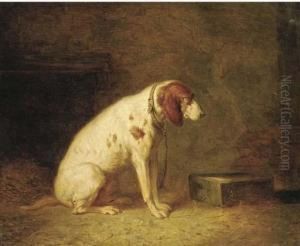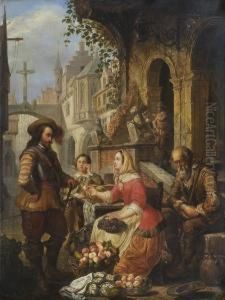Petrus Josephus Witdoeck Paintings
Petrus Josephus Witdoeck was a Belgian artist born on May 29, 1803, in Bruges. He was a prominent figure in the 19th-century Belgian art scene, known for his contributions to lithography, painting, and drawing. Witdoeck's artistic journey began in his hometown, where he was initially influenced by the rich artistic heritage of Bruges. His early works were mainly religious in nature, reflecting the strong Catholic identity of the region.
Witdoeck's talent soon led him to Antwerp, a city with a vibrant art scene, where he furthered his studies and refined his skills. In Antwerp, he was exposed to the works of Flemish masters, which had a profound impact on his artistic development. He became particularly skilled in lithography, a printing technique that was gaining popularity at the time for its ability to reproduce artworks and illustrations accurately.
Throughout his career, Witdoeck produced a significant body of work that included religious subjects, portraits, and scenes of daily life. His lithographs were highly regarded for their detail and accuracy, making them valuable documents of 19th-century Belgian culture and society. Witdoeck's contributions to Belgian art were recognized by his contemporaries, and he was a respected member of the artistic community in Antwerp.
Petrus Josephus Witdoeck's legacy is preserved through his works, which continue to be studied and appreciated for their historical and artistic value. He passed away on November 1, 1884, leaving behind a legacy that contributes to our understanding of Belgian art in the 19th century. Witdoeck's mastery of lithography and his dedication to capturing the essence of his subjects make him a notable figure in the history of Belgian art.

